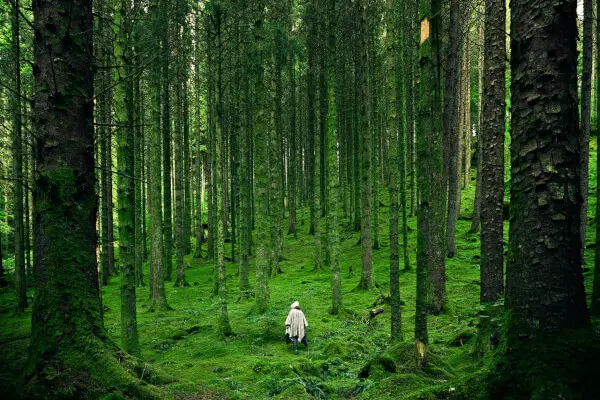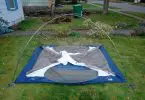Learning how to survive being lost in the woods is an important prerequisite when planning a camping trip. There are a few basic safety measures to put in place and also some important skills you should acquire before hiking in the wilderness at all.
As always, preventing the risky situation – not getting lost – should be your main concern.
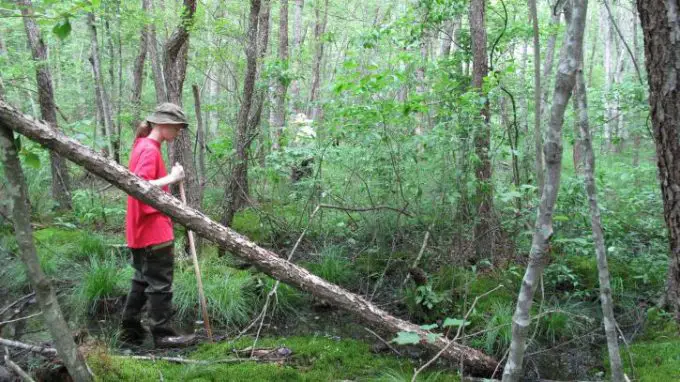
Here are some tips on how to avoid getting lost in the first place.
How to Make Sure You Don’t Get Lost While Camping
- Buy a detailed map of the area you intend to visit. Hiking maps contain all the information you need to find your way around in the woods: each trail is put on the map with a different symbol, and once you find one of those symbols painted on trees, you can easily find the way out of the woods;
- Never leave your camping site without a map, a compass, a backpack with some food and water and without letting someone know where you are going and for how long you will be gone;
- When hiking in the woods, always be aware of your surroundings. Try to identify unique landmarks that will help you re-orient yourself in case you get lost: a boulder, a tall tree or one that has a special shape, a spring and so on;
- It’s hard to orient yourself in a forest, because the trees obstruct what you can see around you. Using a compass is the best way to make sure you are following the right direction while hiking in the woods;
- Woods in national parks and other popular tourist areas usually have trails that are properly maintained and marked. This type of woods make a great destination for beginner campers, as it’s a lot easier to stay on track. Unless you are a very experienced camper, you should not camp and hike in completely wild areas, that don’t have at least minimum markings for hikers.
- Learn as much as possible about the fauna and flora in the area where you are planning to hike. Learn if there are dangerous wild animals, which plants are poisonous and which ones are edible,
learn about the sources of potable water in that area;
Things You Should Never Leave You Camp Without
When it comes to surviving in the woods, the gear you have on you might make the difference between life and death. Every time you are leaving the campsite for a hike, you have to be prepared for the unexpected.
Even a short trip can take a strange turn and you might find yourself stranded in the woods. Here are the things you should always have in your backpack, when hiking:
- A lighter or matches in case you need to light a fire;
- A bottle with water and some food. Go for something small and easy to carry, that packs a lot of calories and nutrients, such as protein bars, beef jerky, cereal bars, chocolate.
- A flashlight;
- A warm jacket and a thermal blanket;
- A map of the area and your compass;
- A small first emergency kit with bandages, sterile absorbent dressing, antibiotic cream, antiseptic wipes, some anti-inflammatory medication like Ibuprofen. Also, if you are on some type of medication for a chronic disease, always have a few doses on you, even when going for a short hike. Better safe than sorry. For a diabetic person, for example, even a few hours of being stranded in the woods without medication can be fatal.
- A signaling flare in case you will need to point rescuers to your location;
- A knife and even a fire arm if you are hiking in areas with dangerous wild animals;
- Some iodine to purify water. Use 2 drops per quart of clear water and 10 drops for cloudy water to kill the bacteria. Once you add the iodine, leave the water at least 30 minutes in order for the iodine to purify it;
- A small pliable shovel;
- Some tarp and paracord, to allow you to improvise a shelter;
How to React When You Realize You Got Lost in The Woods
The most important advice is not to panic: it will only make things worse as acting in a panic usually means making poor decisions. The moment you notice you are no longer familiar with your surroundings and you actually don’t know where you are, stop to assess the situation.

There are a few tricks that might help you find your way back to your camp site:
- Check to see for how long you were hiking. Knowing your average walking speed, you can also calculate the maximum distance to your campsite from where you currently are. Keep in mind that you might be a lot closer than the maximum distance, as you might have been walking in circles without realizing.
- In case you estimate you are not too far away from the camp site (less than 10 miles) and you want to try to find your way back, use markings to make sure you don’t start walking in circles again. Draw or cut markings on trees often, and put rocks in your trail as a way to show yourself that you have already been in that area before;
- If you have a whistle on you, blow it to let your camping mates know where you are. If you don’t have a whistle, just shout from time to time. People might be already looking for you, or you might be close to the camping site without realizing it;
- Keep track of your surroundings all the time: the last thing you need when you are lost is to get lost again. Look for landmarks that might guide you toward the camping site.
Survival Tips for When You Have To Spend More Than A Day Lost In The Woods
There are different degrees of being lost in the woods. If you are in an area often visited by tourists, with marked trails, and you are not too far away from the campsite, with a little bit of attention you will be able to find your way back.

However, if you are hiking in complete wilderness and there are virtually no chances to meet another human and there is no campsite nearby, your survival strategy must be different.
- You need to assess your situation carefully. Did you inform anyone about your trip and the approximate area where you will be hiking? Is anyone able to alert authorities about your situation and about you missing in the woods? How long it will take for a rescue team to reach your location? Try to estimate how long it will take until someone will be able to reach you and, in the meantime, stay put, without panicking, and focus on your survival.
- The most important tools for your survival will be a shelter, keeping warm, water and food. Make an inventory of your supplies and try to portion your food depending on how long you expect to be in the woods. You probably have some water on you, but if you are going to spend more than a day in that place, you will need access to more water. Try to locate a water spring or stream near you.
- Gather as much firewood as possible. Nights in the woods can get pretty chilly even during the summer. Also, you might have to keep the fire burning all night to protect you from wild animals.
- If you don’t have a tent, build a small shelter to protect you in case it’s raining. Collect some solid tree branches and arrange them in a pyramid shape, like a tent. Tie them together with some paracord. Then, cover the skeleton with smaller branches with the leaves on. It doesn’t have to be tall, just tall enough to allow you to sit. It will not be completely waterproof, but it will make a huge difference if it starts to rain. Of course, it’s a lot easier to improvise a shelter if you have some tarp on you.
- Once you set up camp, explore the area. Make sure you mark your way all the time as you explore your surroundings, to avoid getting lost again from your new camp site. Try to find a higher spot, like a hilltop – it might help you understand where you are and even help you find the right direction.
- Major landmarks, such as hills or lakes, are marked on maps, so try to find such landmarks when exploring your surroundings. Once you are sure you identify a landmark on your map and on the terrain, it should be pretty straightforward to find your destination and direction with a map and a compass. However, unless you are 100% sure that you read the map correctly, that you identified the landmarks from the map and you know the right direction, it’s still better to stay put!
- In case you decide to keep walking, leave messages for the rescue team: the direction you took, the day and the time of day when you were at a certain place.
Make sure that the messages are visible (by tying something colorful on a branch, for example). If you are going to leave messages written on paper, wrap the paper in something waterproof.
However, paper can be easily destroyed by rain, wind or wild animals and it’s much better to carve such messages on trees or arrange rocks in formations that point in the same direction you went.
What to Do When No One Is Looking for You
Wilderness rescue teams and survival guides are recommending that, once you realize you are lost you should stay put and wait to be found. This is the correct strategy, one that works in most cases. However, there are some situations when staying put and waiting to be found it’s not an option.
See also: Best Buy Satellite Phone: Choosing a Life-Saving Gadget for Backcountry Use
If no one knows where you are hiking, or no one knows when you should be back to alert the authorities about you missing, and the chances for a rescue team to even start looking for you are slim, than it doesn’t make sense to wait around.
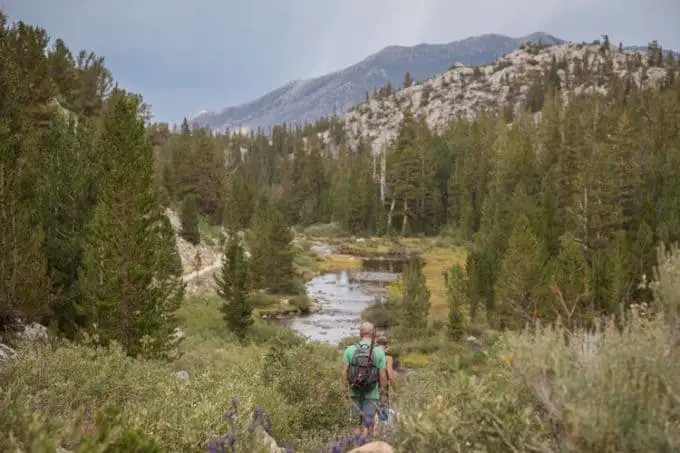
Also, if you can’t find a source of water, you should keep going until you find one. Dehydration kills you much faster than hunger and it causes symptoms such as dizziness, fatigue, headaches or confusion, so it’s paramount that you find water.
So, what to do in a worst case scenario, if you are lost and certain that no one is looking for you?
- Looking into the distance to find landmarks (hills, mountains, lakes, rivers) is extremely important. Find a tall tree and climb as high as you can to see as much of the terrain around you as possible. If you have a map, try to identify the landmarks you are seeing on the map and use the map and the compass to orient yourself.
- If you don’t have a map and a compass (which is a very poor idea when hiking in the wilderness) try to memorize the topography of the surroundings. If you are able to see the edge of the forest, go in that direction. Make sure you are keeping the same direction by climbing into trees from time to time.
- Keeping a direction in the woods, without a map and a compass, is extremely difficult. The trees obstruct you from seeing into a distance, so you only have a few options. By watching the Sun’s path you can estimate where West and East are. If you’re facing the sun early in the morning, when it rises, you are facing East. North will be roughly a quarter turn counterclockwise – if you’re facing the sun, than you have to turn to your left to face North. Use the cardinal points to find your way out of the woods.
- Another good idea is to follow a course of water downstream. All streams go into a larger stream, and then a larger one, then a river – so you will end up out of the woods at one point. Also, keeping near the water increases your chances of stumbling upon a hunting cabin or another camping site with people.
How to Protect Yourself Against Wild Animals While Being Lost in The Woods
The first step is to find out what you should be protecting against. Depending on area where you are camping, there are many types of animals that could attack you, from bears and wolves to wild cats. Reptiles can be even more dangerous, because they are hard to spot and can be lethal. For more tips on how to prevent animal attacks, see our earlier piece.
If you are hiking in an area where venomous reptiles live, make sure you have an anti-venom set on you at all times.
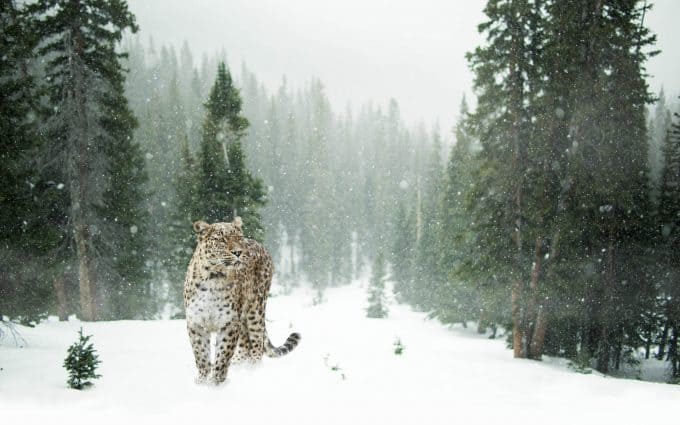
There are a few general rules that will help you prevent unwanted encounters with wild animals:
- First of all, wear high boots made of leather that cover your ankle completely. If you step on a snake and it launches to bite, it will bite the boot and not your leg.
- Try to stay on tracks that look like they are used by humans as much as possible.
- Pay attention to the droppings on the ground. Wild animals have trails inside the woods that they use to reach the water and food supplies. If you notice a lot of droppings in an area, it might signify that you are on one of those tracks, and it’s better to go in a different direction.
- Never approach something that looks like the den of a wild animal: holes in the ground or under rocks, branches put together in a peculiar manner;
- If you spot a wild animal, stay put and keep your distance. Try to make as little noise as possible and wait for the animal to walk away. Wild animals are usually pretty shy and don’t engage with humans unless they feel threatened. Keeping your distance and keeping silence is the safest strategy. If the animal engages you, then you should make as much noise as possible. Launching a signaling flare will scare off wild animals. However, if you are planning to hike in an area where large wild animals are a common occurrence, you should definitely have a hunting gun on you at all times.
For more camping safety tips, check out our earlier piece on this topic.
When preparing for a hiking trip, make sure you follow all the safety measures to avoid getting lost. What do you think it’s the most important object to have on you, if you happen to get lost in the woods?


